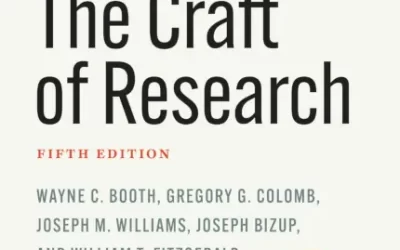To begin creating a memoir, writers must learn how to express their reality in an artistic format.
Defining a memoir is the first step in this style’s creative nonfiction writing process.
When trying to create a personal portrait reported in unshaped facts and unfiltered information, in completely chronological order without thematic explanation, the author must write an autobiography. A major theme of memoirs is theme itself, and threads of different themes—such as culture, politics, or gender—can provide inspiration at tough points in writing. At the same time, the nonfiction aspect balances out the creative aspect in bringing a sense of life instruction into the format rather than delving into “merely” a good story.

When the goal of a personal piece is to refute accusations, self-glorify, or self-examine, even if the points are valid and the narrative honest, the work is neither creative nor truly nonfiction. Memoirs need to be fair to everyone, and their authors must acknowledge when writing that memories are not exact and plenty slip through the cracks. The people featured need to be written with the compassion necessary for fully developed “characters” and human beings, while the writer remembers who the main character is. Good memoir writers use consideration and deliberation and write for another party.
The narrator needs to be mature and have an observant and dependable gaze during “scenes” to provide the viewers with all necessary information. All scenes in a memoir should accomplish three tasks: engage the memoir’s major themes, advance the plot, and deepen characterization.
Authors who choose memoirs over autobiographies give themselves the chance to live in their own story in an entirely new, creative way. Bringing their former worlds to life means using telling details and sensory information such as smell and taste, which can further draw readers into a descriptive scene that uses at least two senses simultaneously. When memories falter, finding and using photographs can be helpful.
Many memoirs begin with a prologue, which can be useful in making the “declaration” to draw in readers. A memoir’s creativity shines through in building an essential story arc from life with a clear destination. When people are living their everyday lives, most of the time they’re not tracking their epiphanies, but a memoir allows writers to build their hindsight-recognized epiphanies into understanding and a lesson for the reader. Whether that’s overcoming demons in a bottle or a needle, the stresses and pressures of fame and fortune, or escaping a hard-knock situation by accident of birth, almost all published memoirs shape the author’s life into and around a major story of their life rather than loosen and widen the scope into a life’s entirety. During the honest reflection of writing a memoir, the resolution should find itself.
Some easy practical tips to keep in mind when writing a memoir:
- Some readers will be listeners, thanks to audiobooks, so keep an ear out for anything that sounds too “written” – try reading it aloud.
- Cut the frilly parts and formalities, as the point of a memoir isn’t to show off erudition.
- Get the facts as straight as possible, as knowledge adds weight and power.
- Even when time zigzagging occurs, the reader should have an orderly progression, and a life timeline can help determine what is relevant.
- Weed out the redundancies. (This would be a good place to break out the thesaurus and the dictionary.)
References:
Handling the Truth: On the Writing of Memoir by Beth Kephart
The Truth of Memoir: How to Write about Yourself and Others with Honesty, Emotion, and Integrity by Kerry Cohen
Your Life is a Book: How to Craft & Publish Your Memoir by Brenda Peterson
By: Grace Dietz
Grace is an Editorial Assistant at Technica Editorial




